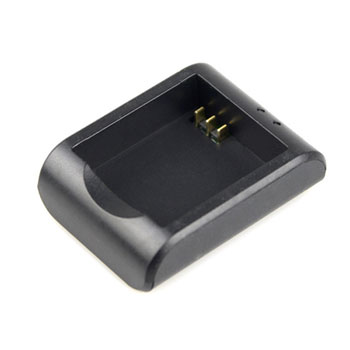Camera & Video Drivers
It allows hundreds of USB webcams to be used by many Mac OS X video-aware applications. The aim is to support as many webcams as possible. In addition, macam also supports downloading of images from some dual-mode cameras. Macam especially tries to support those cameras not supported by Apple or by their manufacturers. Yes, sometimes the user will have to unplug and re-plug the UVC device less than a few times in order to restore the camera functionality, but regardless the end-user experience seems rather poor for these class-compliant devices that are supposed to be supported by the USB driver that ships with Mac OS. I have tested with many applications. Icatch (IV) Video Camera Device. By Sunplus Free. Clicking on the Download Now (Visit Site) button above will open a connection to a third-party site. Download.com cannot completely. To find the latest driver, including Windows 10 drivers, choose from our list of most popular Microsoft Camera downloads or search our driver archive for the driver that fits your specific Camera model and your PC's operating system. Tech Tip: If you are having trouble finding the right driver update, use the Microsoft Camera Driver Update.

ASCOM Video Collection by Video Standard Author (external link)
Drivers for video cameras as well as a C# client reference implementation for using video via ACSCOM and some anecdotal info on the 2 year development of this new ASCOM Standard and tools.Celestron Nightscape Cameras (external link)
Drivers for Celestron Nightscape cameras are available from the manufacturer.Diffraction Limited (external link)
ASCOM Drivers for SBIG Aluma CCD cameras, SBIG Aluma AC-series SCMOS cameras, SBIG STC-series cameras using the DL Imaging Drivers.Finger Lakes Instrumentation (external link)
Drivers for Finger Lakes cameras are available from the manufacturer.IDS, AVT/Prosilica and Basler fast cameras (external link)
ASCOM drivers for IDS, AVT/Prosilica and Basler fast cameras. You can find the compatibility matrix on Genika Astro web site (button on the right). They support Binning 1 and 2, AoI and gain setting in 8 bits mode. AVT requires UNI SDK 2.1; Basler the Pylon 3.2 and IDS the uEye SDK 4.2. All require the .NET SDK version.
Panasonic Lumix (external link)
Drivers for the Panasonic Lumix cameras. The button leads to the GitHub site with documentation and a video tutorial. Scroll down to see the intaller link.Orion StarShoot Family (external link)
Drivers for several models of Orion's astrophotography cameras are available from the manufacturer.Quantum Scientific (external link)
Drivers for Quantum Scientific cameras are available from the manufacturer.Raspberry Pi 12MB Color Sensor (external link)
Since May 1st 2020 a High Quality camera sensor was released for the Raspberry Pi. This 12 MB sensor is now made available for ASCOM clients via this ASCOM driver which enables applications to make color images of up to 240 seconds duration. The sensor (separately available) provides a low entry astrophotography high resolution color camera. Instructions for installing and running this software is included in the included readme file.Starlight XPress (external link)
Drivers for Starlight XPress cameras are availble from Dad Dog Development, Ltd.
Hello All,
I am working on a USB Video Class (UVC) compliant device, and noticed some strange issues with UVC enumeration on Mac OS. I am currently running Sierra 10.12.1 on a Macbook Air 13' mid-2011 edition.
Often (~25-50% of the time), UVC class-specific enumeration is not completed. I have been testing with the device my company is creating, and as a control, an industry-standard UVC-compliant device (Logitech C920) and observed similar results. These are both USB composite devices, consisting of USB audio class (microphone, and optionally speaker) and USB video class (camera) components.
In all cases, the audio (UAC) functionality is properly enumerated when the device is plugged in. This is presumably because this is central to the operating system, and needs to be made available in the system sound preferences.
The video (UVC) functionality, however, is a different story. This is not enumerated until a camera application is executed, but fairly often, the video enumeration is just not initiated by the host. I have found somewhat better results when the USB device is plugged in prior to opening the camera application, but either way the video device is available significantly less than 100% of the time.

Yes, sometimes the user will have to unplug and re-plug the UVC device less than a few times in order to restore the camera functionality, but regardless the end-user experience seems rather poor for these class-compliant devices that are supposed to be supported by the USB driver that ships with Mac OS. I have tested with many applications - Photobooth, Quicktime, Facetime, Skype, Zoom, and Hangouts...all exhibited the same issue, so my presumption is that this is a bug in the UVC host driver in the operating system itself.

It's possible that I have missed something - I haven't really found a good way to see what's going on inside this version of Mac OS during the enumeration process. All I can see from my protocol analyzer is that sometimes the UVC function is initialized when the camera application starts, and sometimes it is not. Any advice on how I can gather more info on what is happening would be greatly appreciated!
Hopefully this is something that has been noticed and is being fixed. I will also look into following the formal bug reporting process, but it's probably a good idea to get some input from the community before taking that next step. Is anyone else seeing this? Does anyone know a good way I can log what is happening for the bug report?
Thanks in advance,
Eken Video Camera Usb Device Drivers For Mac
Chris